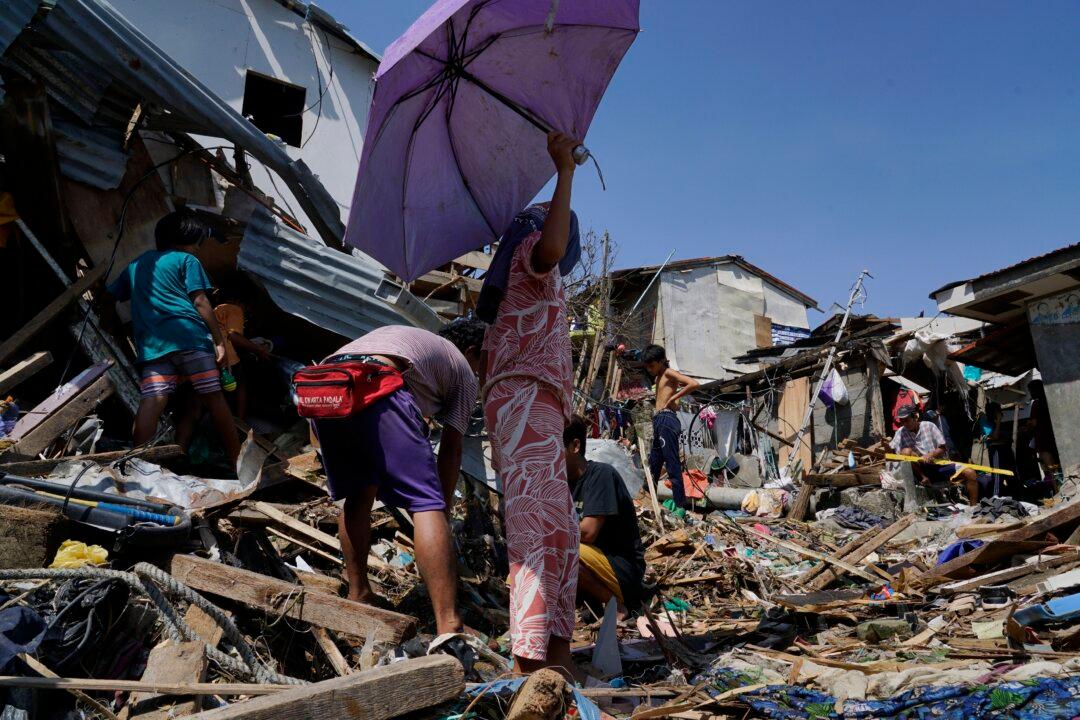MANILA, Philippines—The death toll rose to more than 200 following the strongest typhoon to batter the Philippines this year, with 52 people still missing and several central towns and provinces grappling with downed communications and power outages and pleading for food and water, officials said Monday.
At its strongest, the typhoon packed sustained winds of 195 kilometers (121 miles) per hour and gusts of up to 270 kph (168 mph) before it blew out Friday into the South China Sea.





